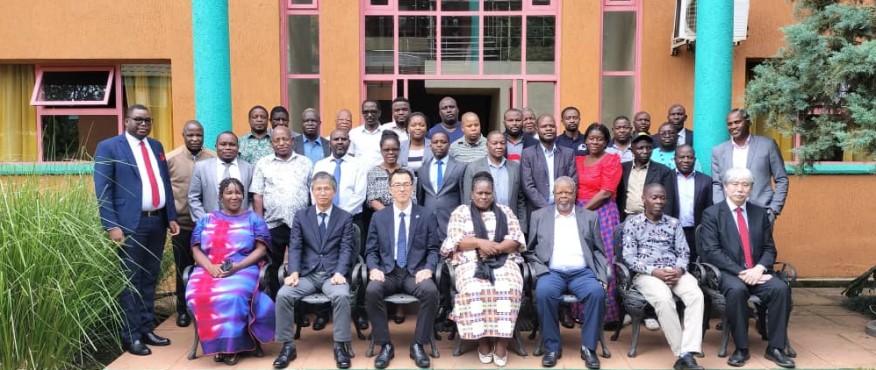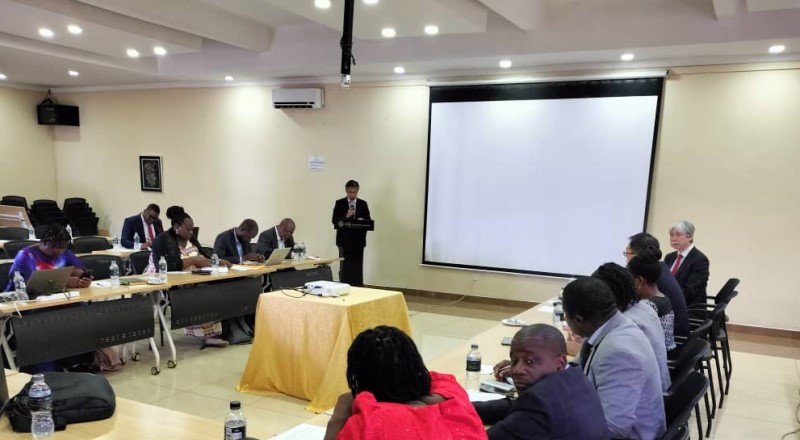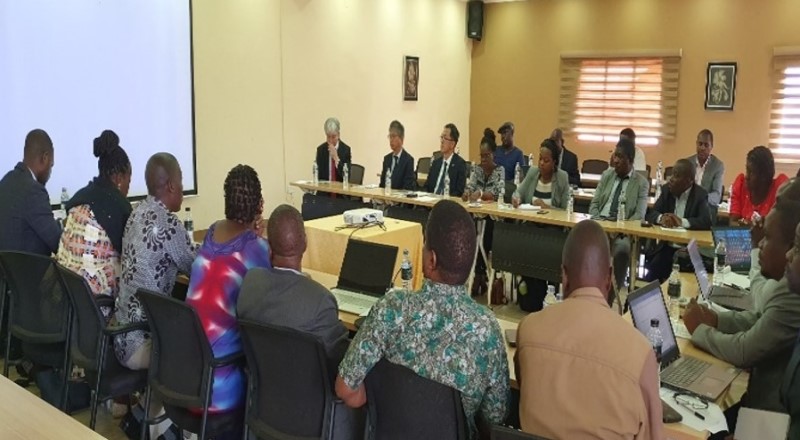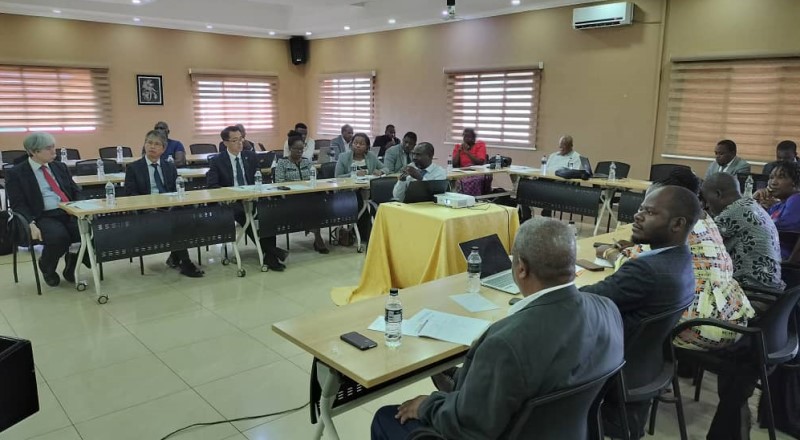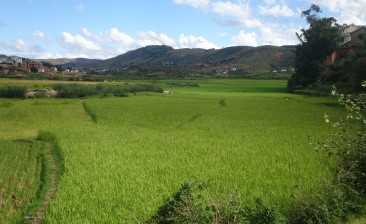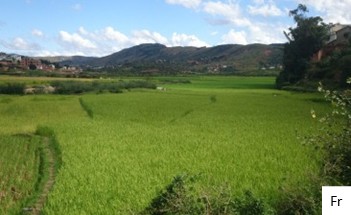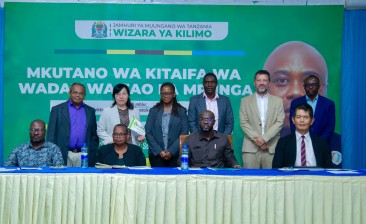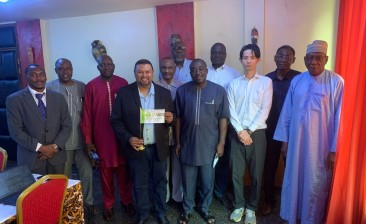Malawi, March 2024
NRDS Validation Workshop in Malawi
Background
The NRDS Task Force completed the draft of its NRDS second generation in Jue 2023. The draft was then shared by the NRDS Focal Person with the Management Committee of the Ministry of Agriculture for internal validation. After the internal validation, the NRDS document was shared with wider stakeholders for their review and inputs. This process was followed by a formal validation on March 22nd, 2024 at Crossroads Hotel in Lilongwe.
Methodology
The workshop started with speeches from the JICA Representative in Malawi, followed by the General Coordinator of CARD, and the Director of Crops Development (Ministry of Agriculture) for the official opening of the validation workshop.
Opening ceremony
Following the opening ceremony, the NRDS-2 Task Force made a detailed presentation of the proposed NRDS document highlighting that the NRDS-2 envisions the rice industry to become regionally more competitive and socio-economically sustainable. It aims to contribute to Malawi’s overall economic growth and food security through rice sector development. The NRDS-2 targets doubling domestic rice production from 155,433 tons in 2022 to 311,000 tons by 2030. NRDS-2 will achieve its goal through the following four strategic objectives: 1) increasing smallholder rice production and productivity; 2) improving market alignment and competitiveness of smallholders in rainfed and irrigated ecosystems; 3) enhancing ecological, social, and economic sustainability of rice farming, and 4) strengthening human and institutional capacities along the rice value chain.
Visit to the Office of the Secretary for Agriculture (Ministry of Agriculture)
A mission composed of the General Coordinator and Regional Consultant from CARD, and the JICA Project Formulation Adviser for Agriculture visited the office of the Secretary for Agriculture (Ministry of Agriculture). During the visit, the Secretary for Agriculture (SA) welcomed and briefed the mission about the growing importance of the rice sector in the country, for domestic consumption and export markets. At this stage, the reporter had the opportunity to interview the SA and accompanying staff on the following aspects of the rice sector in the country:
Question 1: How is the rice sector characterized in Malawi?
Response: The Malawi Secretary for Agriculture (MoA) characterized the rice sector as the second cereal after maize in terms of area cultivated for cereals. He added that rice is one of the prioritized value chains under the National Agriculture Investment Plan (NAIP) and is considered a value chain with good potential for commercialization in domestic and export. According to the SA, rice is an attractive alternative food-and-cash crop for both smallholder and commercial farmers for household income, food security, and nutrition. As a consequence, in recent years rice has increased market acceptance over other staple food crops. Furthermore, the labor-intensive nature of cultivating the rice crop, and the processing and management of rice grains and byproducts also hold immense potential for creating several on-farm and off-farm jobs and triggering economic development around rice-growing rural areas. In addition, he said that Malawian consumers prefer aromatic varieties such as Kilombero and Faya despite their low genetic potential
Question 2: What are the main constraints to rice production in the country?
Response: The main constraints to rice production in Malawi are:
- The low productivity due to the use of inadequate production technologies, poor quality seeds, and the limited use of other yield-enhancing inputs such as fertilizers and pesticides;
- Inadequate agricultural infrastructure and equipment, leading to low exploitation of the existing potential with negative consequences on the productivity and expansion of the cultivated area
- Inadequate post-harvest equipment and technologies
- Drought and floods
Question 3: What are Malwi’s expectations of CARD and the Development Partners?
Response: After the validation of NRDS2 and elaboration of Concept Notes the Government expects to see more donors involved in the rice value chain, particularly in the areas of mechanization taking into account that manual labor is unlikely to achieve tangible results in terms of volume and quality of the rice grain that can meet the market demand taking into account that:
- The development of water control infrastructures is critical
- Training at all levels in the rice value chain is crucial
- The Government is willing to undertake necessary measures to create a conducive environment for the participation of private and small-scale farmers in rice production with particular emphasis on productivity and commercialization
With an increase in rice production, there will be a need to conduct a socioeconomic analysis to see what the real impacts of the interventions made.
Meeting with NRDS Task Force Members and way forward
After the formal closing of the validation workshop, the reporter had a side meeting with Task Force members to introduce each other since this was the first time the reporter met with Malawi Task Force members. The side meeting also discussed the next steps after the NRDS-2 has been officially validated. These included the need for elaboration of NRDS-2 Concept Notes and the need for an M&E data collection Kickoff meeting to inform the next Annual Rice Sector Review Meeting. In this regard it was agreed to undertake the following actions:
| No | Actions | Timeline | Responsibility |
| 1 | Incorporation of comments from the validation workshop | April 11, 2024 | Focal Person and Task Force |
| 2 | Submission to the Ministry of Agriculture for final approval | April 18, 2024 | Seceetary for Agriculture |
| 3 | Elaboration of Concept Notes and Kickoff meeting for M&E data collection | May 20-24, 2024 | Focal Person and Task Force |
| 4 | Organize the Annual Rice Sector Review Meeting | September 2025 | Focal Person and Task Force |
